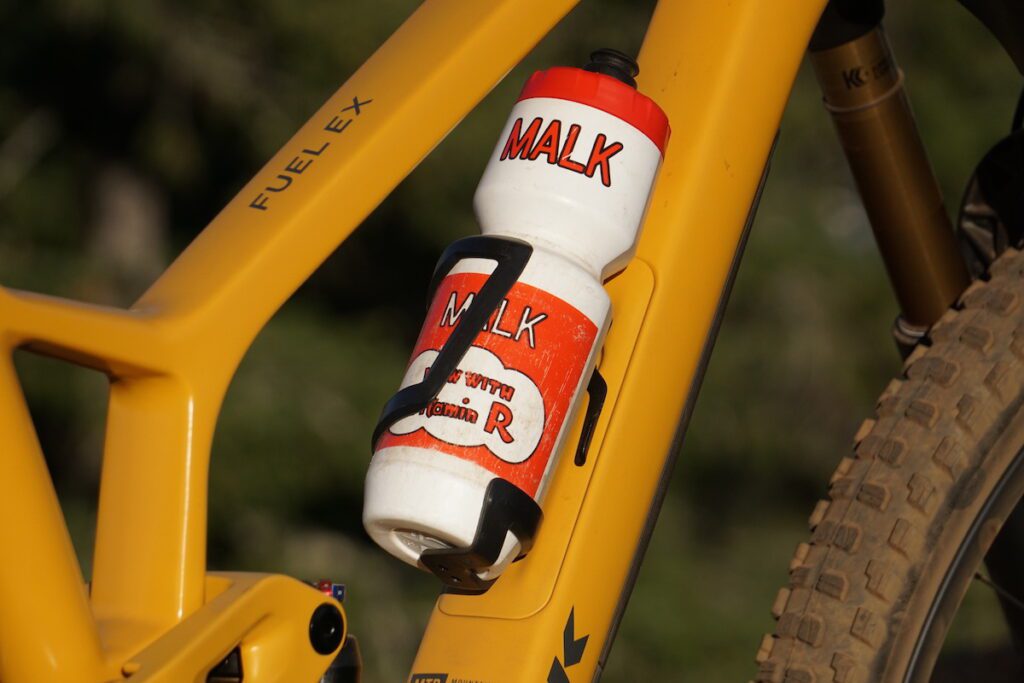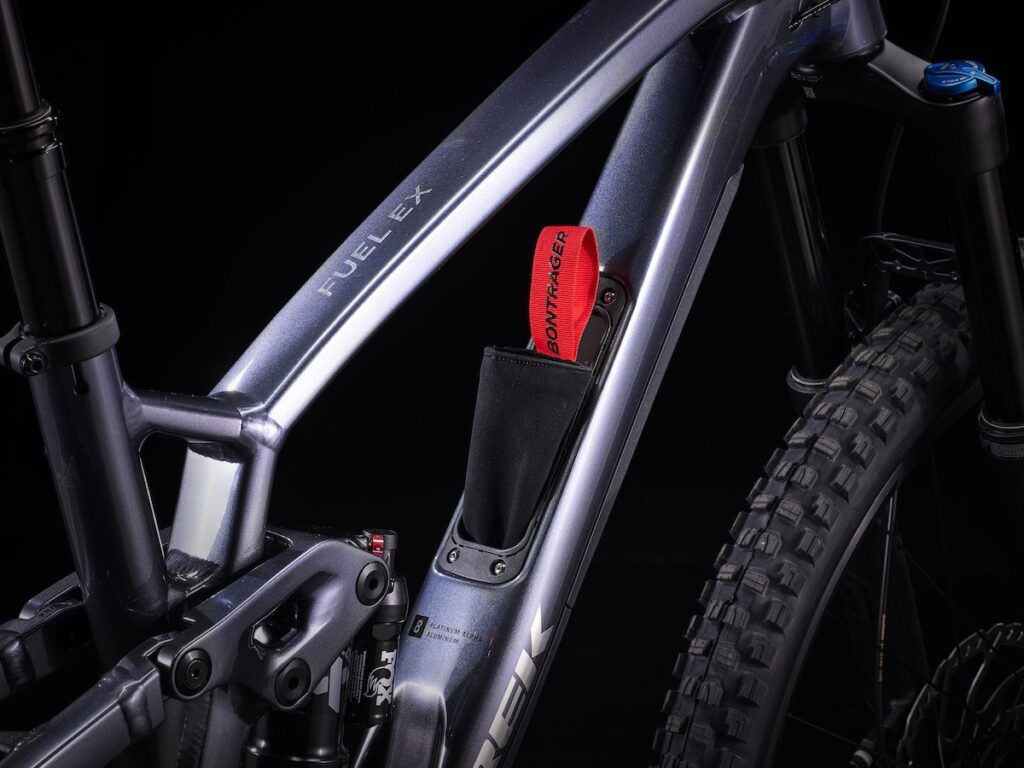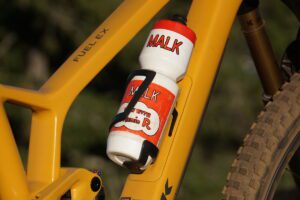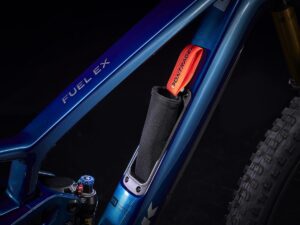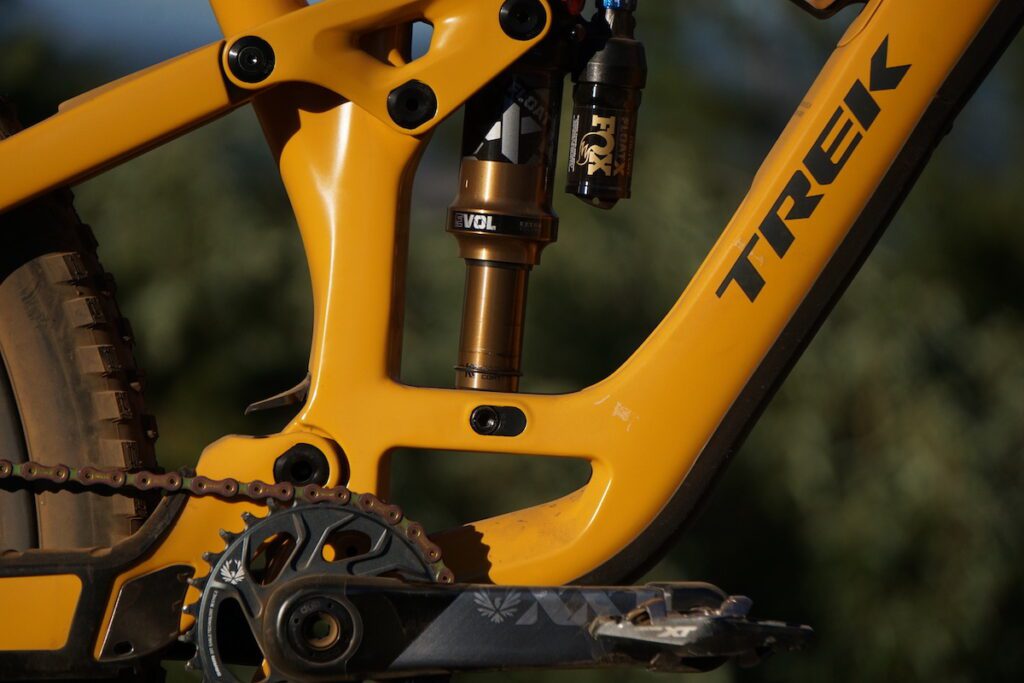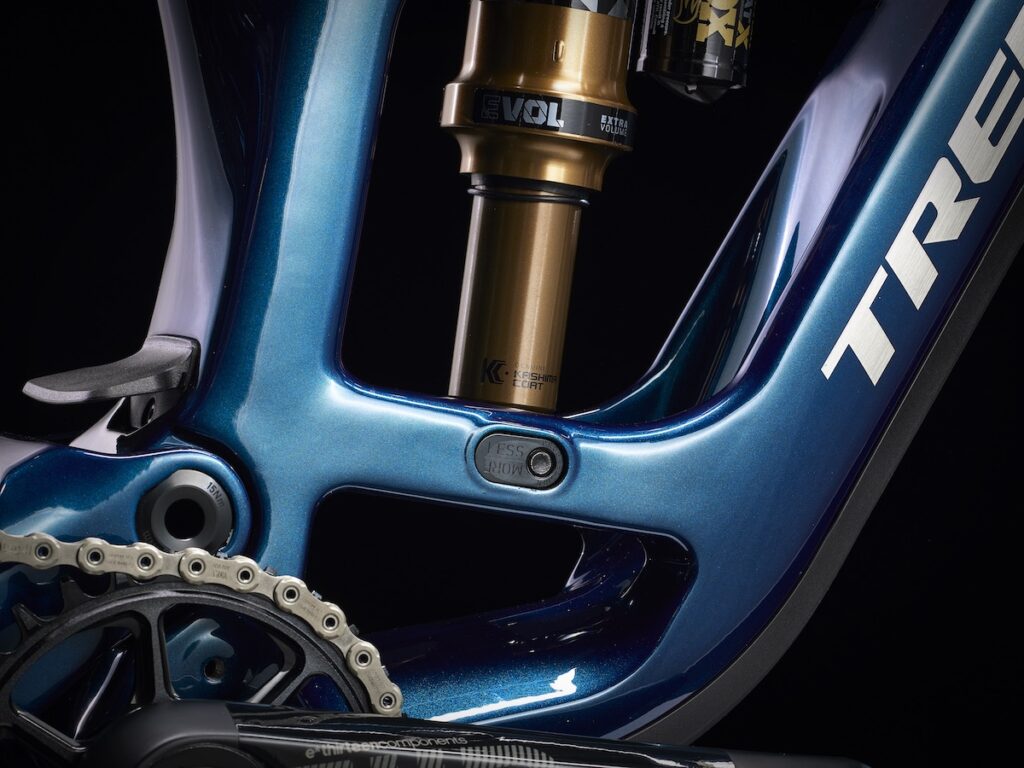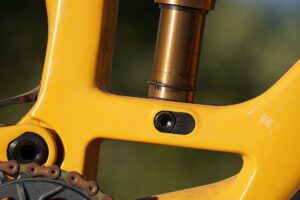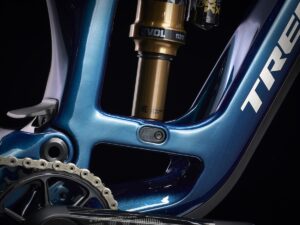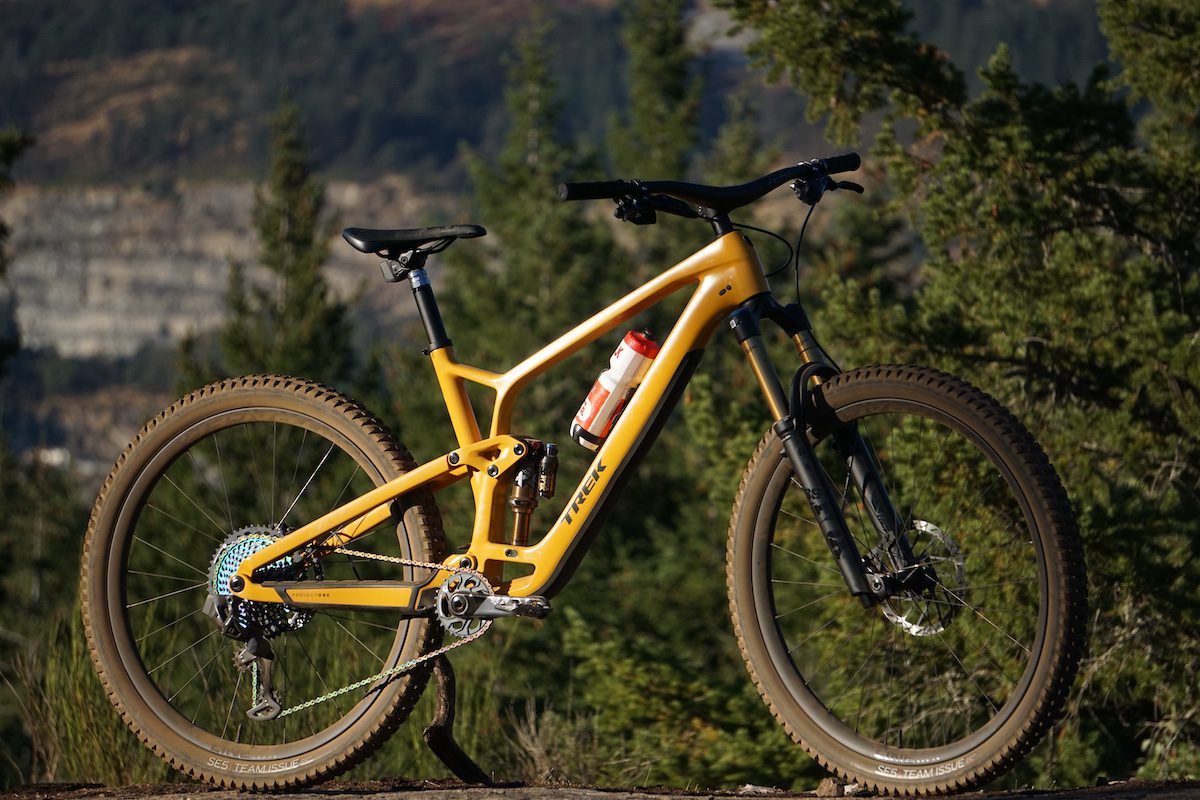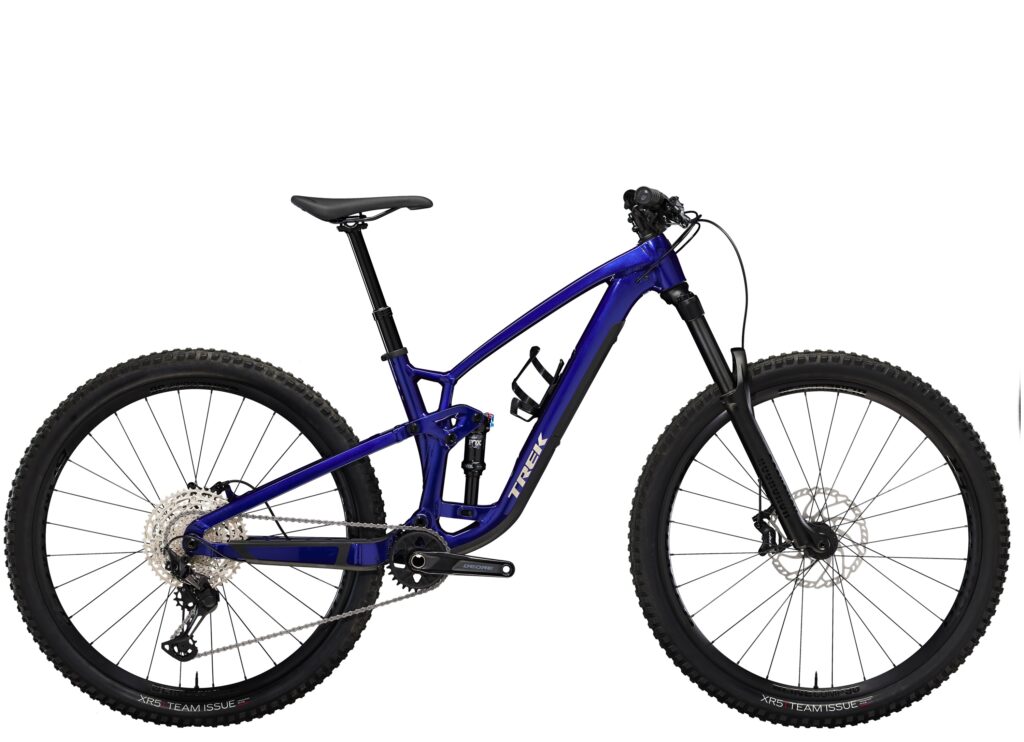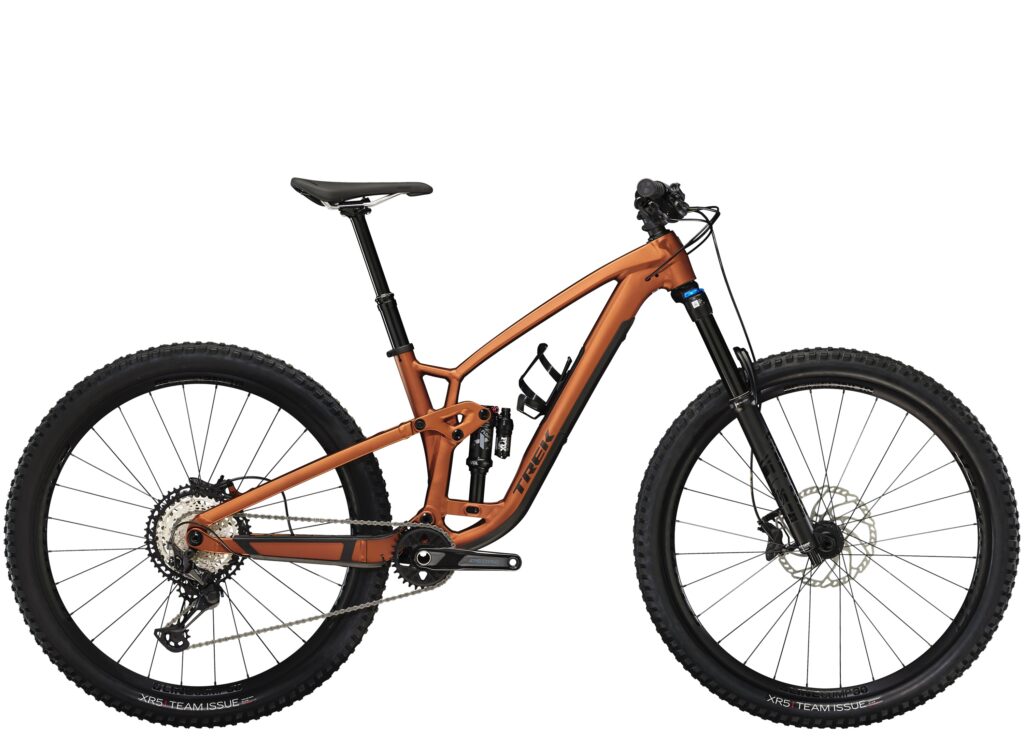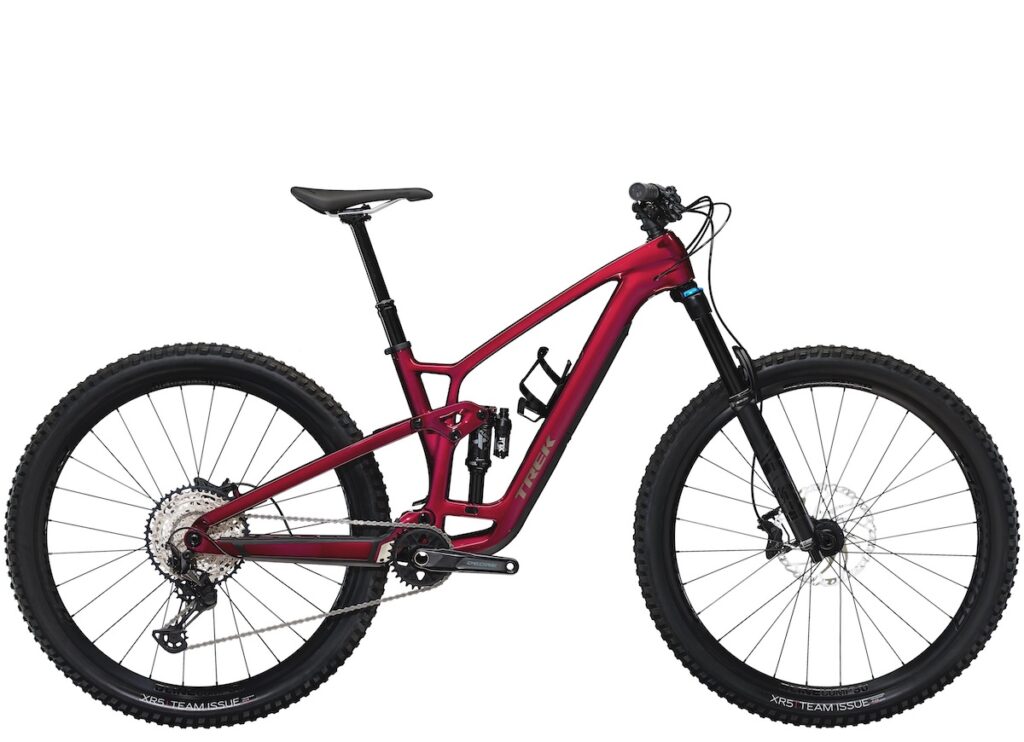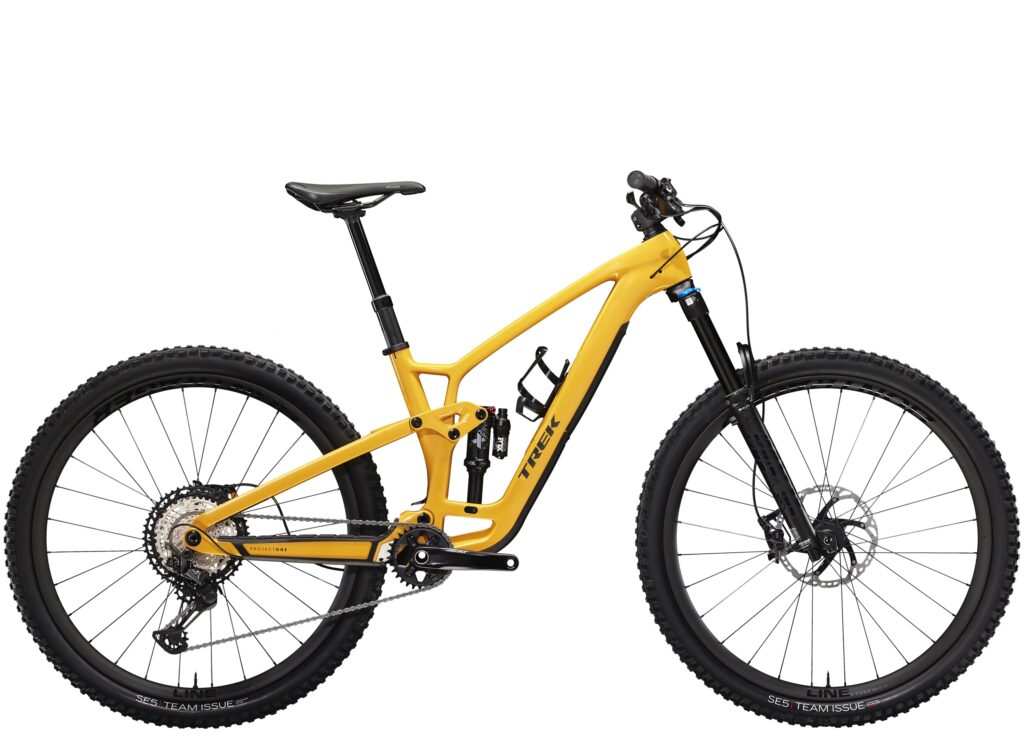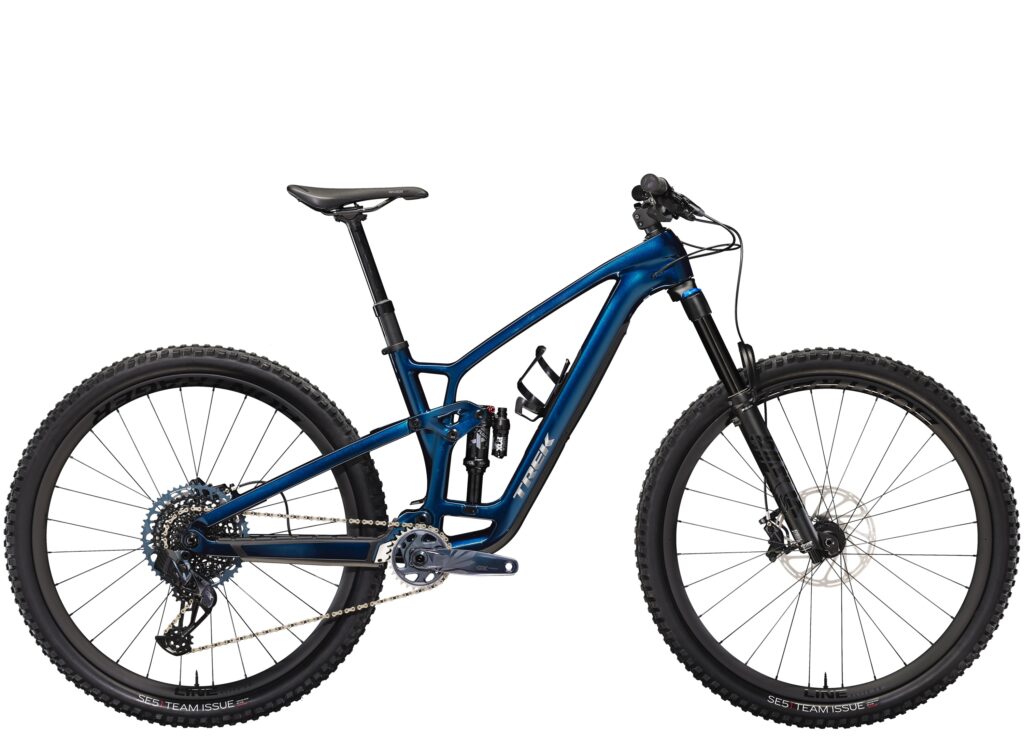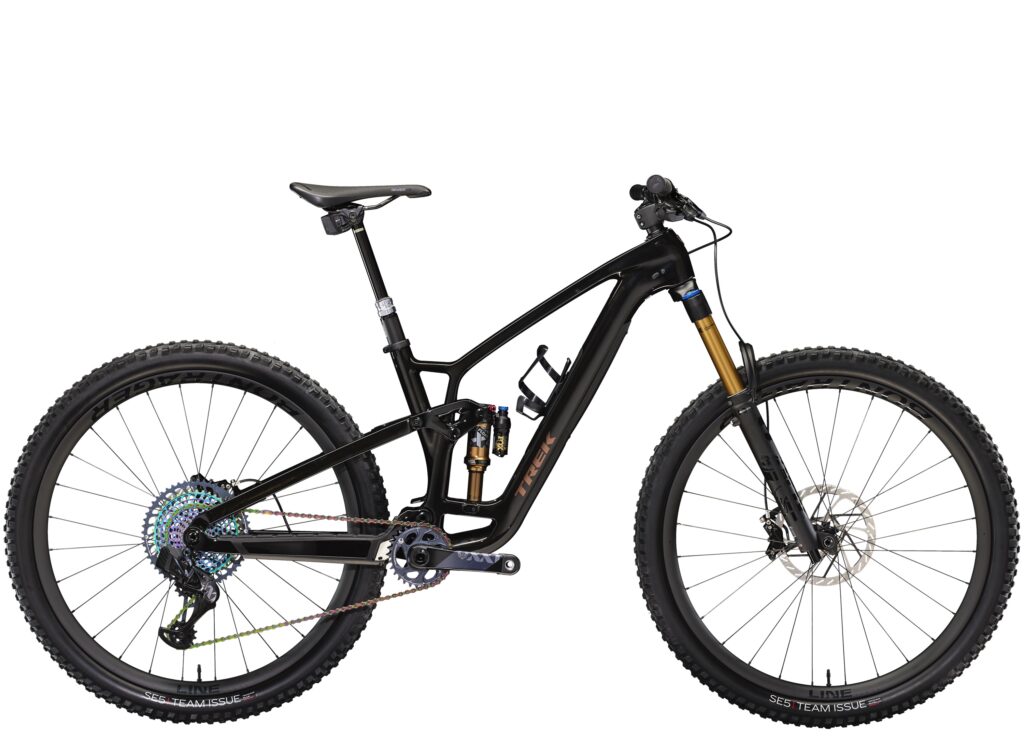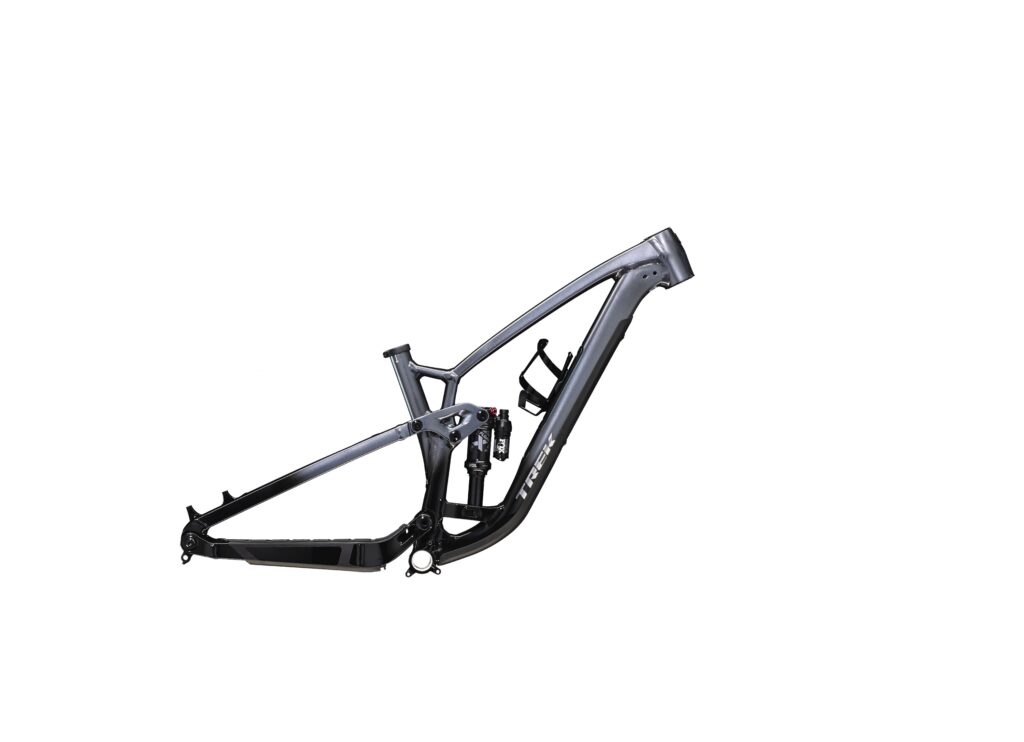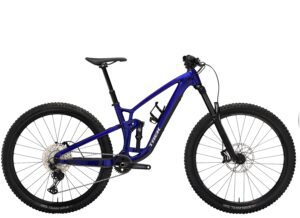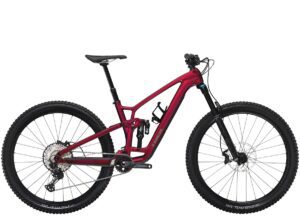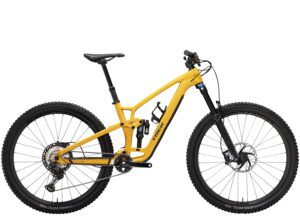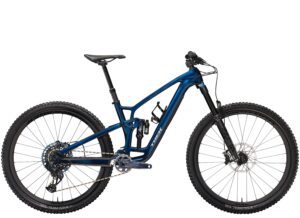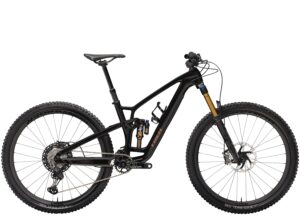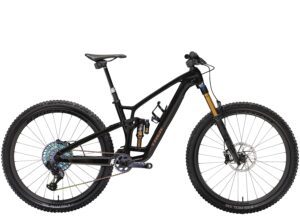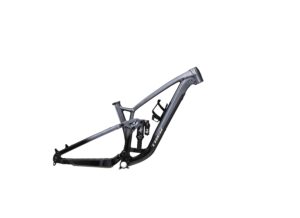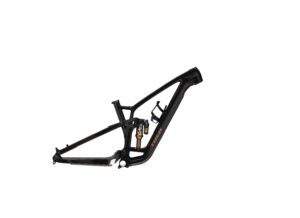First Impressions: Trek aims for ‘quiver killer’ ideal with new Fuel EX
Can a mid-travel trail rig with all kinds of frame adjustments take on 'one bike' status?

When Trek released its groundbreaking new Fuel EXe, a lightweight take on electric mountain biking, the new frame shape left many riders wondering if a similar change was in store for the standard version Fuel EX, too. Turns out, Trek has much more in store for the trail bike than just changing tube shapes.
Dive into the raft of substantial changes to the new Trek Fuel EX below, including our first ride impressions of this new take on a trail bike from Madison, Wisconsin.
Trek Fuel EX Gen6: What’s new?
What changes for the latest iteration, which Trek is calling Gen 6 in place of a model year, of the Fuel EX? Well, everything but the basic idea. There’s more travel, more adjustability, a new frame design that blurs between Slash and Top Fuel, a storage compartment, more sizes and, now, size-specific chainstays. Even the branding is new with more modern, minimalist logos following the EXe’s example.
So, what is the basic idea behind the Fuel EX? Simple. Trek wants it to be a bike for every rider. “All conditions, all riders” is the tagline. That includes experienced riders and riders that just got into the sport during the pandemic, anywhere around the world. Which is, well, a rather ambitious goal. But Trek has a few tricks up its sleeve to get to that ideal trail bike that will work on any trail, in any country.

More travel
Trek opted to level up the Fuel EX to match its electric compatriot. Both bikes now run 140mm of rear-wheel travel with 150-mm forks. That pushes the EX slightly further into trail-bike territory and slightly further away from the cross country roots of the Top Fuel.The new frame shape gives riders room to run air or coil shocks, including aftermarket shocks from most brands.
The new Fuel EX frame also uses a shorter seat mast, for better standover, but allows for more seat post insertion than prior models. That leaves room to run longer dropper posts. Trek’s also expanded the seat tube to fit 34.9-mm posts so riders can run new longer 200 or 220-mm travel posts without losing stiffness or durability.
To match the new travel numbers, Trek takes the Fuel EX further down the longer, lower, slacker, and steeper train. Reach grows by 20mm per size. That’s balanced out by a steeper seat tube angle which keeps the cockpit similar to past models while seated.
Frame updates: Chainstays, storage and sizes
A new frame shape gave Trek a chance to dig into the details on the Fuel EX. All aluminum and carbon fibre models now include an in-frame storage compartment in the downtube of the front triangle. Trek also uses internal cable routing for both frame materials, making for a quieter ride and easy service. All frames come with removable downtube frame protection, so you can adapt the frame to your riding location and level of risk adversity.
A big change is new, size-specific chainstays. That idea trickles down from Trek’s Session downhill rig to the all-rounder trail bike. The idea is to balance out the growing reach numbers as you move up in frame sizes to keep riders centered in the frame. A few other brands have done this on trail bikes already, it’s nice to see Trek taking the step to make sure all sizes get the same ride quality.
And there is a wide range of sizes. From XS to XXL, there are eight sizes to choose from for the Fuel EX. Sizes XS and Small are running 27.5″ wheels. S-XXL are all on matching 29″ wheels, with the XXL being an alloy-only option.
All the adjustments to match any trail
Trek’s ambitious goal to make one bike for any rider in any location requires some assistance. On the Fuel EX, that comes in the form of a wide range of frame adjustments to adapt the bike to location, style of riding and rider preference. Trek’s adamant that this bike can cover anything from occasional all-day epic pedals to serious trail riding that verges on “light enduro.” Basically, it has to be able to do its own thing plus cover a solid overlap with the Top Fuel and the Slash.
Geometry adjustments galore
There are a few ways the Fuel EX does that. First, is Trek’s well-established Mino-Link. That gives riders an option of high and low settings for the bottom bracket (by eight mm) and a 0.5-degree shift in head angle. Second, and new for the EX, is an independently adjustable head angle, via headset cups, that give +/-1 degree (or neutral).
Third is a progression chip on the suspension mount that lets you adjust the Fuel EX’ leverage rate. This is also borrowed from the Session and Trek’s race program. There are two settings, “Less” and “More” progressive. “Less” is a more traditional tune for Trek. “More” adds more bottom-out resistance for big jumps and harder landings. The progression chip adjusts the spring and damper independently from, and on top of, coil/air spring adjustment. So you can keep the same air pressure, but get a different ride quality from the EX.
Mullet-ready
Last, the Fuel EX comes with the option to run a mixed-wheel “mullet” set-up (only on 29″ models. 27.5″ XS and S frames don’t have enough fork clearance). To do that, you have to keep the Mino Link in the high setting and also up the fork travel to 160mm to keep a reasonable bottom bracket height. And, arguably, with the EXe matching many of these features, the last option riders have is between traditional and electric power sources.
All told, that gives the Fuel EX a range of, to focus on just one number, 62.9 to 66.0-degrees for head tube angle. To keep track of that dizzying array of adjustments, Trek is adding a new online Dynamic Geometry Chart, so you can plug in your settings and see exactly how it will change the bike’s geometry.
On the trail: Trek Fuel EX 9.9 XX1 AXS
Trek makes bold claims about Fuel EX’s wide range of abilities. Can one bike, even with multiple adjustments, actually cover that much ground on the trails?
Well, getting to the top is no problem. Tipping the scales at 31.1 lbs. (14.14kg) in the 9.9 build, climbing isn’t much of a chore. The suspension is tuned to technical climbing over cross country efficiency, as you would expect for a mid-travel trail bike, so it is somewhat active when putting down the power. But the tradeoff is that it does deliver traction on the trail when you need it, up and down.
Light weight, zero flex
Descending, the Fuel EX, like the EXe, uses the travel it has quite effectively. It feels solid and composed on steep, chunky trails. It doesn’t plow through rough trails as fast as a Slash would but, even on demanding and steep trails, it doesn’t feel uncomfortable or out of place. Instead, it’s fun to be able to pick lines and lift the light Fuel EX up and put it back down exactly where I want to. On more mellow or flowing trails, the light weight pays off with easy speed and plenty of momentum to punch it up shorter hills.
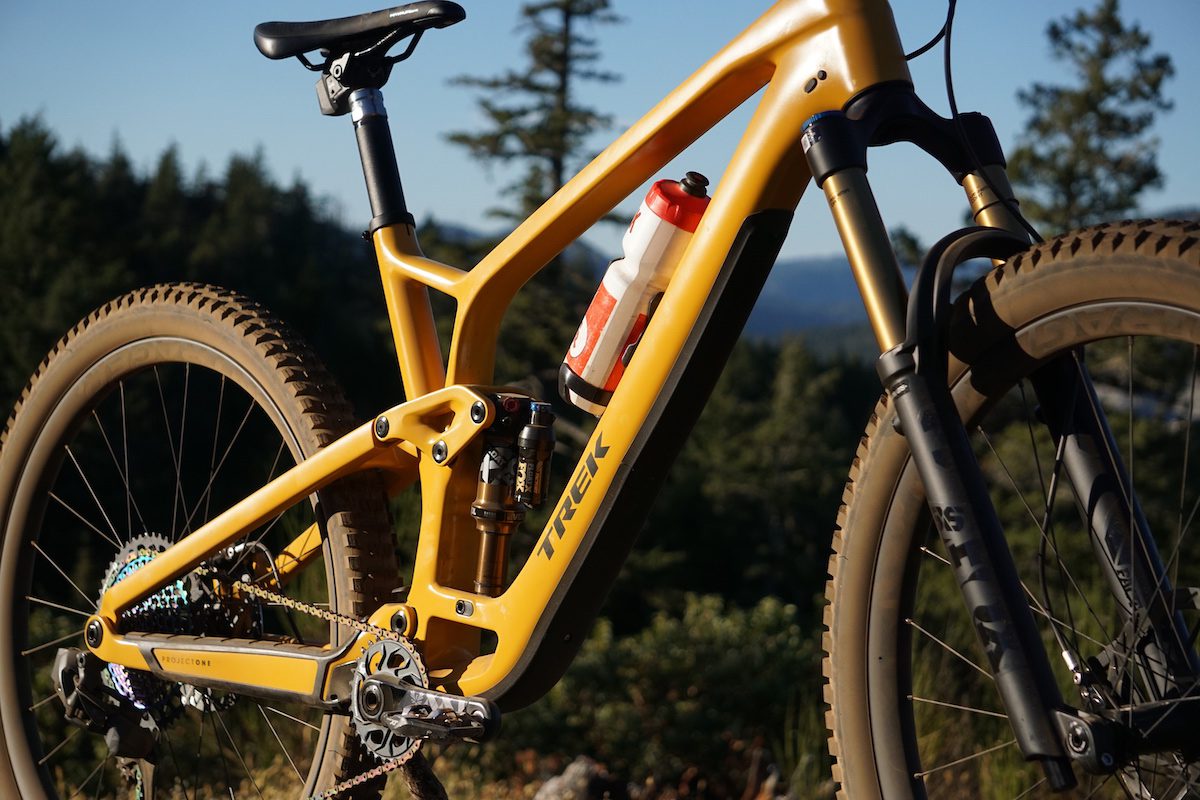
Part of this is due to the very stiff frame and build on the 9.9. With a stout carbon fibre frame, with wide, stylishly boxy tubes and plenty of struts and supports, paired with stiff Bontrager Line Pro 30 wheels and the RSL integrated bar/stem, any movement in the Fuel EX comes from the Fox suspension working to smooth out the trail. It is impressively solid for a reasonably light bike and, as a result, accelerates fast, absolutely carves through berms and will not be twisted off line in twisty technical trails. The downside is there is plenty of feedback through the bars, which can get tiring on long rides. You also have to have the suspension dialed to keep traction in loose, chunky or off-cambre corners as the unforgiving EX frame won’t add any flex to keep you grounded.
First thoughts?
With a handful of rides on the Fuel EX, it’s a promising bike. I haven’t had time to run through all of the myriad adjustment options (about 18 by my count) to test Trek’s “any rider, any trail” claim. But it does feel like a competent climber and delivers a snappy, responsive ride on a range of flow or reasonably hard trails. A bike for everywhere is a hard claim to make but the Fuel EX is an exciting option for riders that want to take on a wide range of riding and always feel at home.
Trek Fuel EX v6: pricing and availability
Trek offers eight models of the Fuel EX, sort of. The EX 5 is carries over from previous years, sticking with 130mm/140mm travel, rear and front. The other two alloy frames are the EX 7 and EX 8, both with all the upgrades of the new design. Five more models use Trek’s OCLV Mountain carbon fibre, starting with the 9.7 and running through Shimano and SRAM options for the 9.8 and 9.8 models. Both alloy and carbon fibre versions are available as frame-only options. And, of course, the new Fuel EX will be available in Trek’s custom Project One program.
Gen6 Fuel EX models are available now through Trek’s website and through Trek dealers across Canada.
| Fuel EX 5 (Gen 5) | $3,500.00 |
| Fuel EX 7 | $4,400.00 |
| Fuel EX 8 | $5,300.00 |
| Fuel EX 9.7 | $5,850.00 |
| Fuel EX 9.8 XT | $8,4000.00 |
| Fuel EX 9.8 GX AXS | $9,850.00 |
| Fuel EX 9.9 XTR | $12,900.00 |
| Fuel EX 9.9 XX1 AXS | $13,700.00 |
| Fuel EX 9.9 XTR | $12,900.00 |
| Fuel EX 9.9 XX1 AXS | $13,700.00 |
| Fuel EX C frameset | $5,000.00 |
| Fuel EX AL frameset | $3,350.00 |

